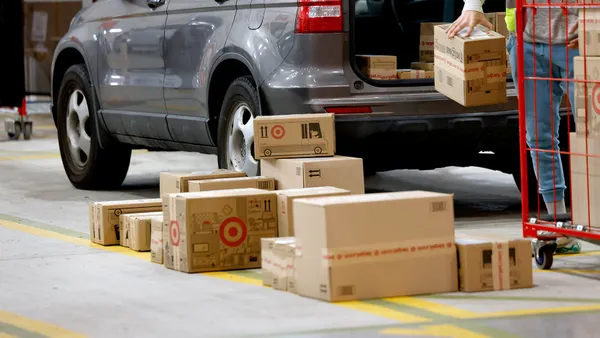Dive Brief:
- The total business inventories-to-sales ratio shot up to 1.67 in April, the highest the measure has been since 1992, according to the Census Bureau's monthly inventory and sales report released last week and a review of the agency's historical numbers.
- Manufacturers saw the biggest spike with their inventory-to-sales ratio rising to 1.7. Retailers were at 1.69 and wholesalers reported a ratio just above 1.6.
- Total business sales were down 14% from March 2020 and were down 18% year over year in April. Inventories also declined, but not to the same level, falling 1% from March 2020 and 2.2% year over year, according to the Census Bureau.

Dive Insight:
The inventory-to-sales ratio paints a clear picture of the pandemic and the economic turmoil it has created across retail and manufacturing. Stay-at-home orders put in place to help flatten the curve of coronavirus infections resulted in the closure of retail storefronts, and the increase in e-commerce wasn't enough to make up the difference, according to Jon Gold, VP for supply chain and customs policy at the National Retail Federation.
"It all comes down to the impact from the coronavirus," Gold said of the April figure from the Census in an interview with Supply Chain Dive.
Consumer-facing retailers were hit when stores closed with stockrooms full of inventory. "All department stores are already saddled with spring inventory purchased before the shutdown that they cannot sell through their brick [and] mortar stores," Moody's wrote in a research note early last month. "They must find revamped terms with vendors, which will be critical for preserving liquidity, until their doors reopen."
Smaller retailers were likely working with their 3PL partners to find warehouse space for inventory as cargo continued to move into the country, albeit at lower levels, Gold said.
Going forward, retailers will manage this inventory level in a variety of ways, including reviewing orders and increased caution with new orders as the recovery of consumer demand remains uncertain. Others are employing sales to try to move inventory out of stockrooms, he said.
Retailers already began sales in the first quarter to start moving "stale" inventory, Moody's noted in another note from late last month.
"I've seen some that are holding inventory potentially until next season to put it back on the shelves and then also looking at necessity donations as well," Gold said.
Packing inventory away until next season is seen as an expensive option, but is being viewed as "a viable alternative given the amount of inventory that must be reduced," Moody's wrote.
Moody's said margins will "take a major hit" as department store retailers try to figure out what to do with excess inventory, according to its note. Using China to gauge the potential economic bounce back, Moody's pointed out that the country's consumer demand trends "remain well below levels before the pandemic."
This story was first published in our weekly newsletter, Supply Chain Dive: Operations. Sign up here.















